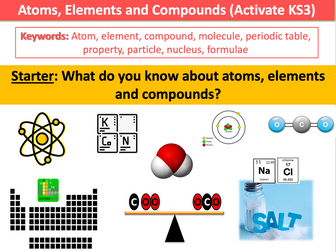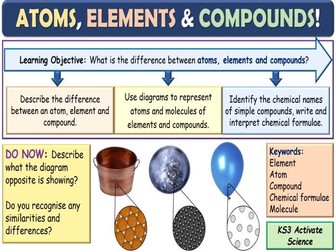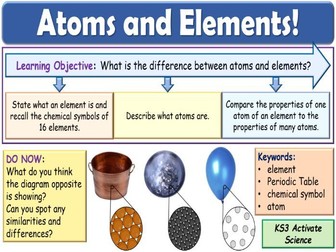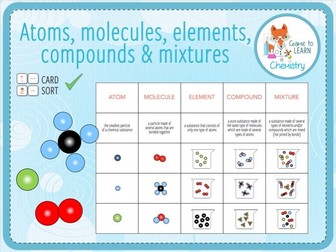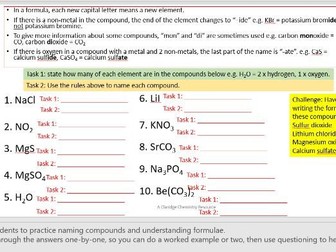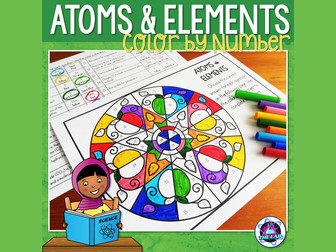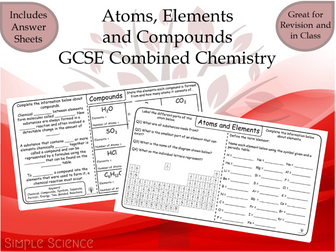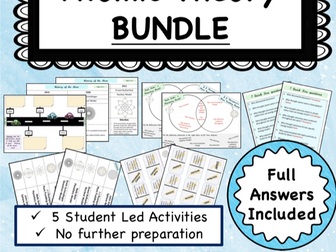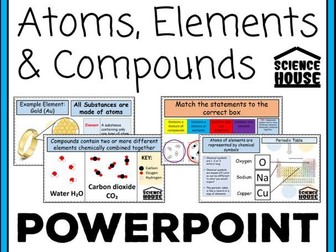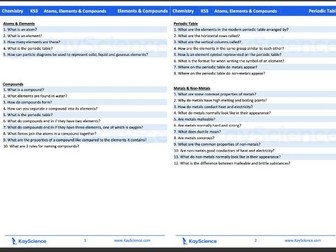Bundle
Atoms, Elements and Compounds (Activate KS3)
<p>KS3 new for the Activate 1 unit ‘Atoms, Elements and Compounds’.</p>
<p>Full lessons ready to use straight ‘out of the box’. You’ll struggle to find a set of as many planned lessons this cheap and of similar quality.</p>
<p>Similar structure to my other power points following the input - activity - review phasing<br />
Plenary sections for progress checking<br />
Clear learning objectives and outcomes<br />
Modern and engaging layout<br />
Little adaptation needed<br />
Lesson meet full criteria for this unit<br />
Lessons designed to take up an hour of teaching</p>
<p>LESSONS:</p>
<p>L1 Atoms<br />
L2 Elements<br />
L3 Periodic Table<br />
L4 Compounds<br />
L5 Chemical Formulae<br />
(BONUS LESSON) Interpreting Element Squares<br />
Found in same powerpoint as L5</p>
<p>Please leave constructive feedback :D</p>
